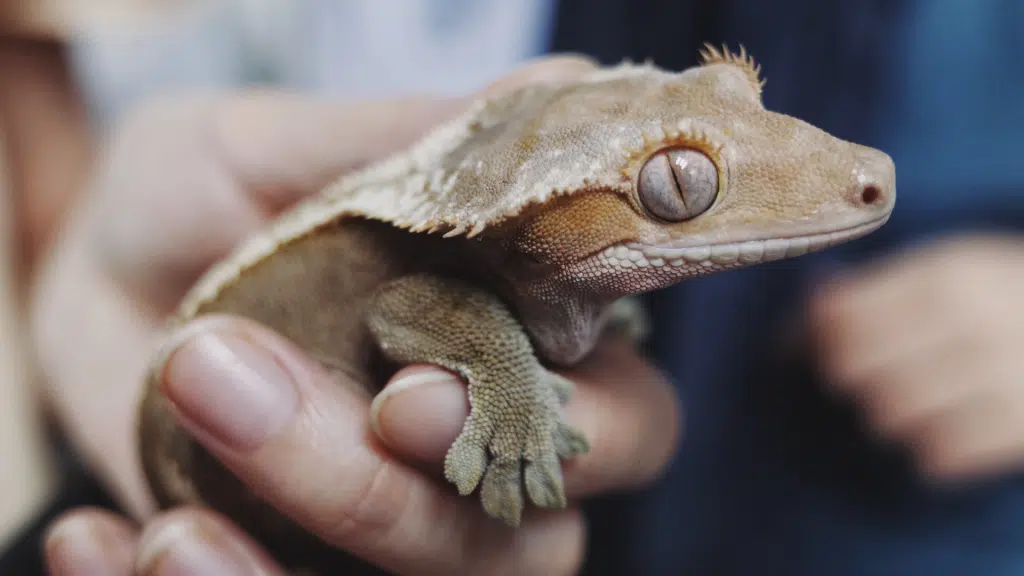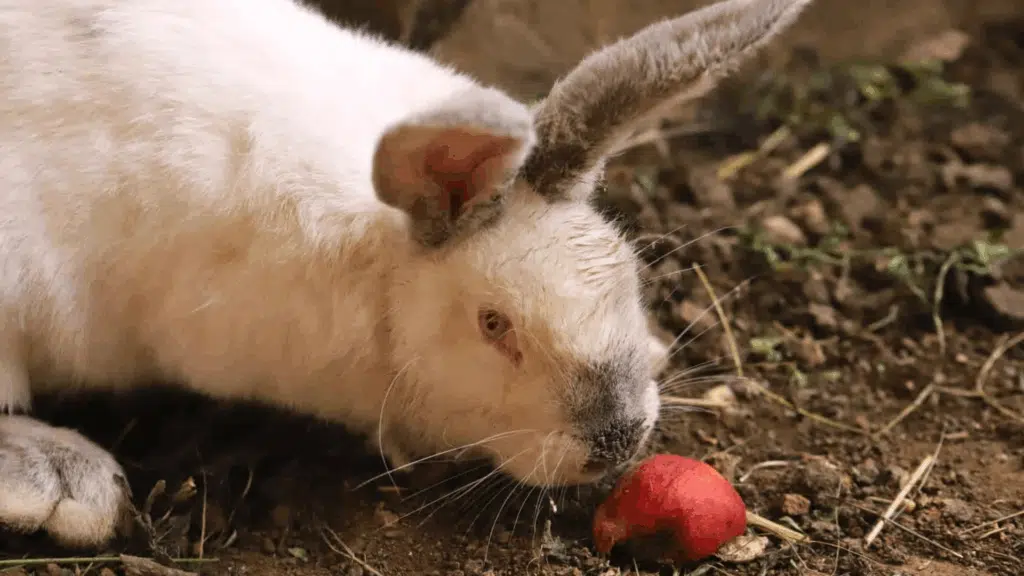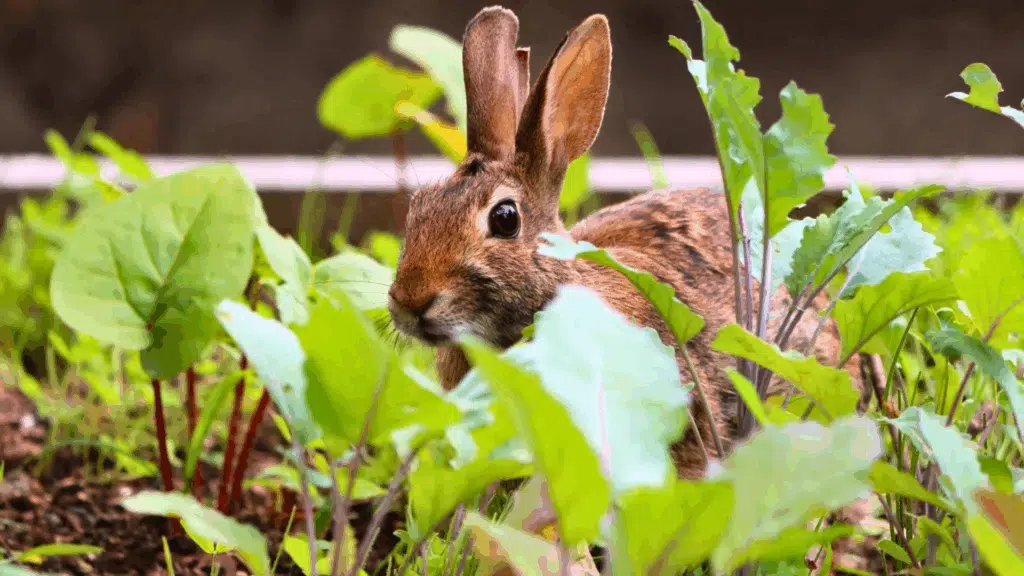Geckos have a way of catching your attention. Their tiny sticky feet, bright eyes, and calm nature make them one of the most interesting reptiles to watch.
Found almost everywhere, from deserts to rainforests, these small lizards adapt easily to different environments.
Many people often ask, “Are geckos reptiles?” Yes, they are, belonging to the same cold-blooded family as snakes and other lizards.
In this blog, we’ll look at what makes geckos so special. You’ll learn about:
- The most popular gecko species around the world
- Their habits, from color changes to night activity
- Fun and surprising facts that set them apart
If you’ve seen one climbing a wall or are just curious about these little creatures, this guide will give you a closer look at their unique world and help you understand why geckos stand out among reptiles.
What Makes Geckos so Fascinating?
I’ve always found geckos fascinating, and I think you might too. They stand out from other lizards in so many ways. For one, geckos can climb smooth walls and even walk across ceilings without slipping.
Their feet have tiny hairs that help them stick to almost any surface, something no other reptile can do quite as well.
What really makes them fun to watch is their chirping and clicking sounds.
They use these noises to talk to each other, which is rare for lizards. Geckos also come in a wide range of colors, sizes, and patterns, making each species different and interesting.
I think people love geckos because they’re calm, curious, and full of personality.
Whether you see them darting across a wall or resting under a leaf, there’s always something fun to notice about these small, clever creatures.
Popular Types of Geckos Around the World
If you’ve ever wanted to know which geckos are the most interesting, this list is for you. I’ve picked five species that show just how different and amazing geckos can be, from calm desert dwellers to colorful tree climbers.
1. Leopard Gecko
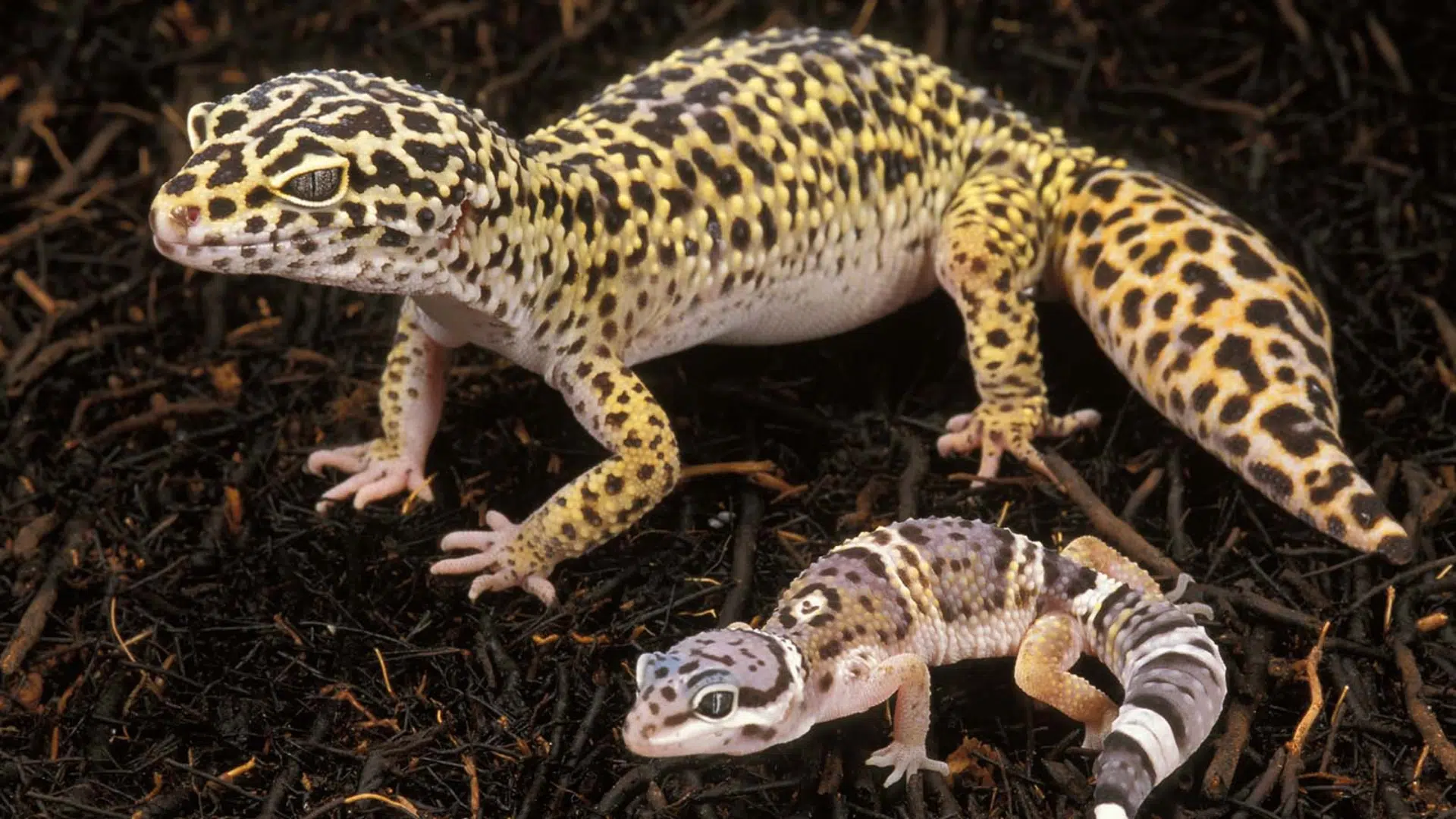
The Leopard Gecko is one of the most popular pet geckos you’ll come across. I like how its yellow body with black spots makes it look like a mini leopard.
It lives in dry, rocky areas of Pakistan, India, and Afghanistan, where it hides under rocks during the day and hunts insects at night. Unlike most geckos, it doesn’t climb walls because it lacks sticky toe pads.
If you’re new to reptiles, this one’s a friendly and easy choice to care for.
2. Tokay Gecko
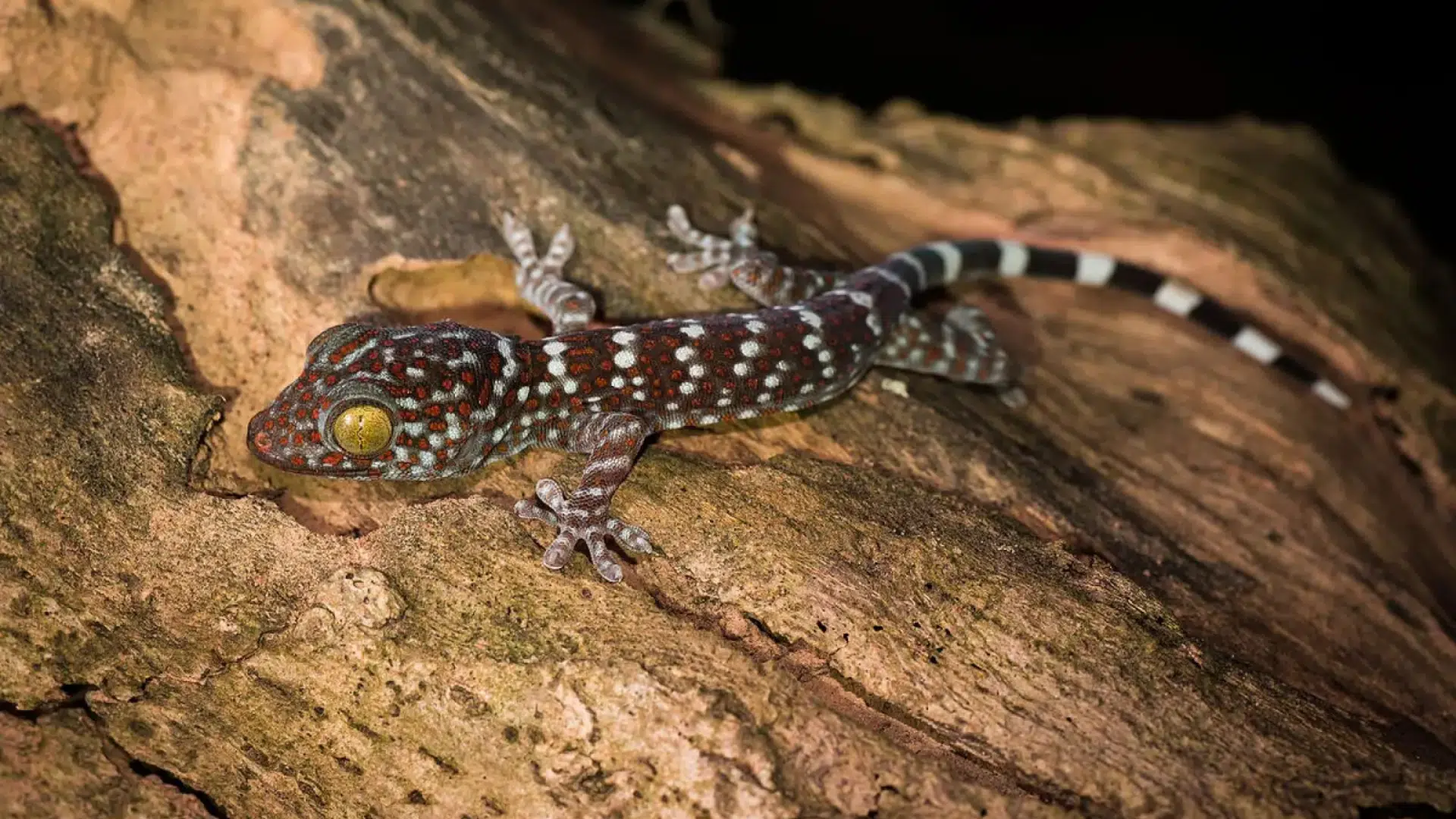
You can’t miss the Tokay Gecko with its bright blue-gray skin and orange spots. It’s native to Southeast Asia and known for its loud “to-kay” call, which sounds almost like it’s talking to you.
I find this gecko fascinating because it’s both strong and territorial. It’s not as gentle as the Leopard Gecko, but its colors and bold nature make it stand out.
You’ll often find it clinging to walls in humid forests or near homes, catching insects with lightning speed.
3. Crested Gecko
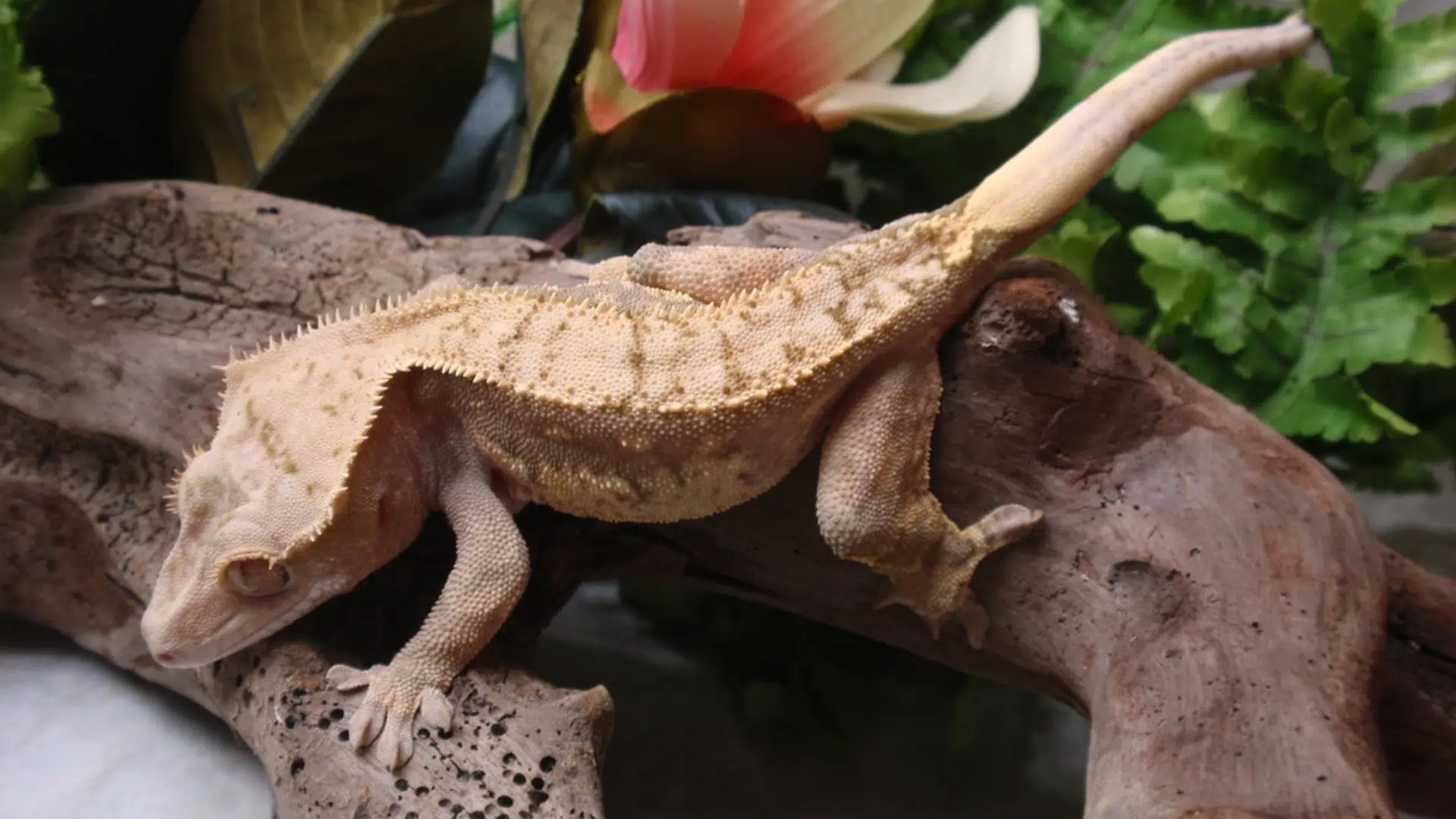
The Crested Gecko comes from New Caledonia, a small island in the South Pacific. I think you’ll love its tiny “eyelash” ridges and soft, bumpy skin.
These geckos were once thought to be extinct until they were rediscovered in the 1990s.
They come in many colors: orange, brown, yellow, and even red. They’re excellent climbers, using their sticky feet and tails to move through branches and leaves.
If you ever watch one closely, its curious and gentle behavior makes it easy to see why people enjoy keeping them.
4. Day Gecko
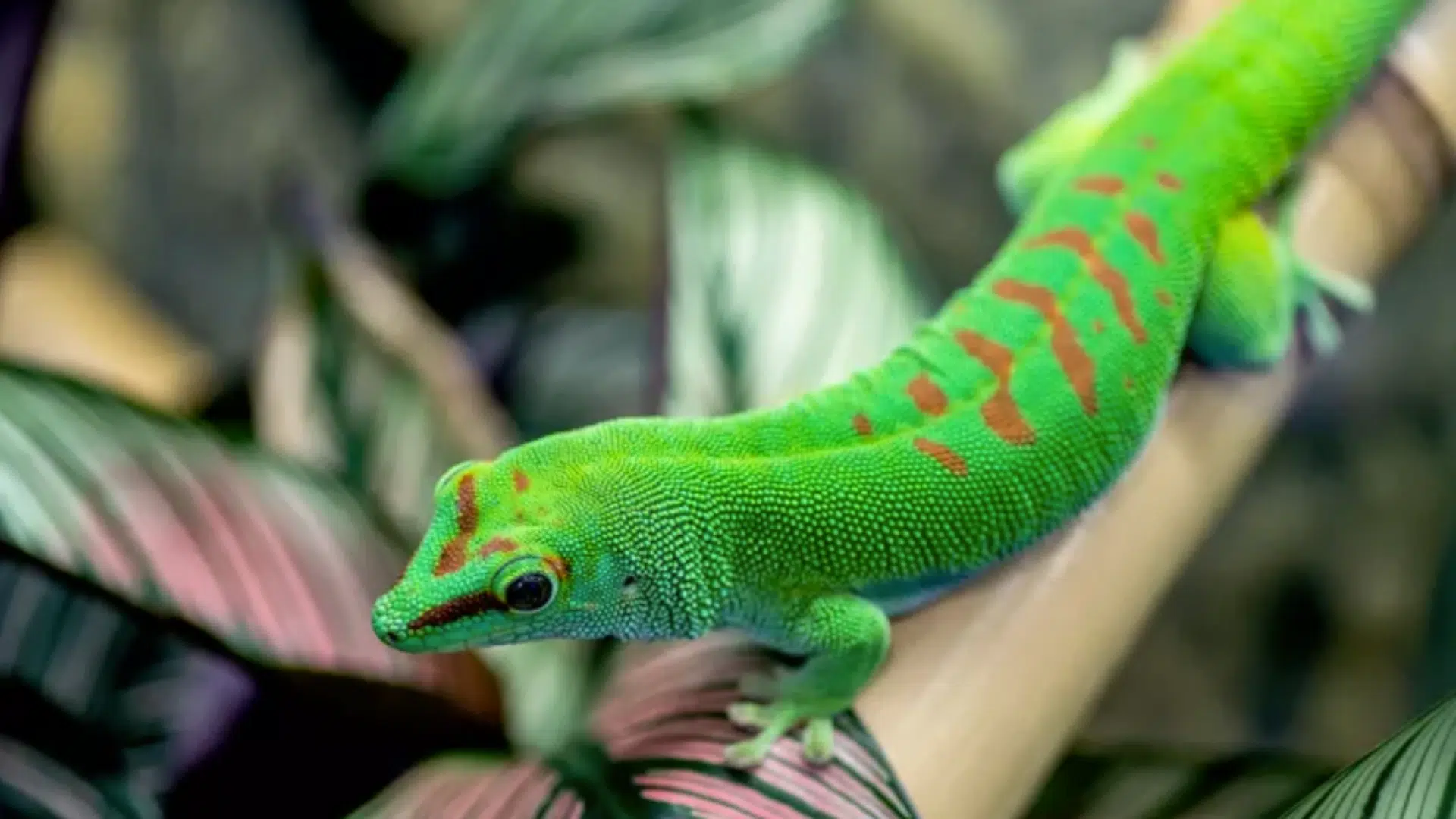
The Day Gecko is one of the few geckos that are active during daylight. Found mainly in Madagascar and nearby islands, it’s hard to miss with its bright green body and red markings.
I’m always amazed by how it blends into tropical plants so perfectly. Day Geckos love humidity and spend most of their time in trees, hunting insects and licking nectar.
They’re quick movers and a bit shy, but their glowing colors make them one of the most beautiful reptiles to observe.
5. Gargoyle Gecko
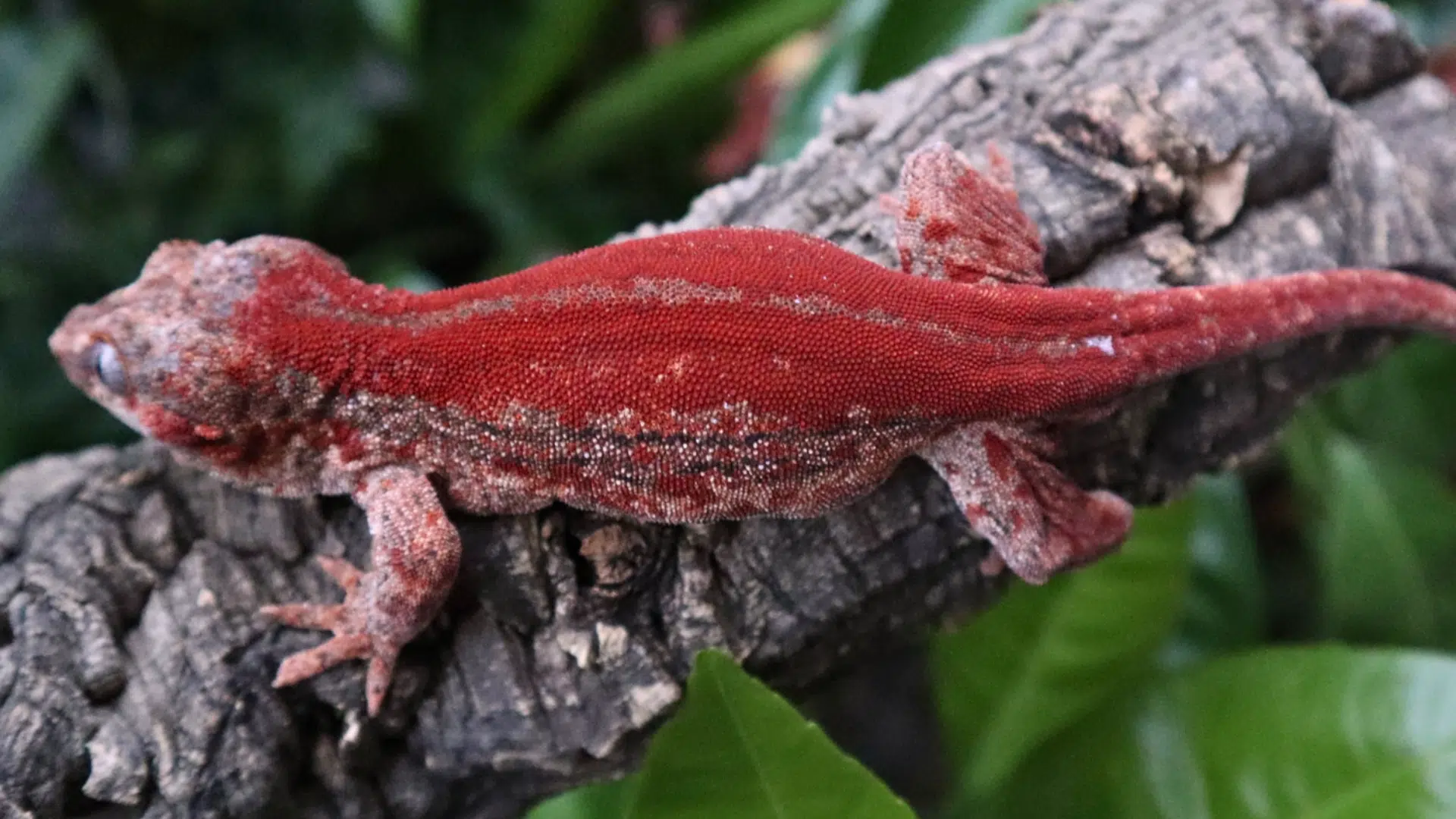
The Gargoyle Gecko, also from New Caledonia, has rough, bumpy skin that gives it a stone-like look. I find its name fits perfectly; it looks tough but is actually calm and easy to handle.
These geckos can change shades depending on their light or mood, shifting from pale gray to deep brown.
They enjoy climbing and are most active at night. What makes them special is their strong tails, which can regrow if lost.
If you like reptiles with personality, the Gargoyle Gecko definitely stands out.
How Geckos Change Colors and Blend In?
I’ve always found it interesting how geckos can change colors to match their surroundings.
They do this through special skin cells called chromatophores, which contain pigments that react to light, temperature, and mood.
When it’s hot, a gecko might turn lighter to stay cool, and when it’s cooler, it may become darker to absorb warmth.
Some species also shift shades to blend in with bark, leaves, or rocks, helping them hide from predators.
Others use color changes to communicate, for example, showing brighter tones when they feel threatened or during mating.
You’ll notice that not all geckos can change colors like chameleons, but even small shifts in shade can make a big difference in how well they stay safe in the wild.
How Geckos Communicate and Interact?
It’s pretty cool how geckos “talk” in their own way. They don’t use voices like we do, but they make clicks, chirps, and squeaks to share messages.
Some of these sounds are warning calls to tell others to stay away, while others are mating signals to attract a partner. You might also hear short, sharp noises when a gecko feels threatened or wants to defend its space.
Along with sounds, geckos use body language, like tail movements, head nods, or quick dashes, to show what they mean.
Pet geckos sometimes react to your voice or movement, showing they’re more aware than many people realize.
Their way of communicating might be simple, but it helps them survive, find mates, and live peacefully with others in their habitat.
What Geckos Eat in the Wild and at Home?
Geckos aren’t picky eaters, but what they eat depends on where they live. I’ve noticed wild geckos hunt for fresh food, while pet geckos rely on what you provide.
- Insects: Wild geckos love crickets, roaches, and beetles. Pet geckos also eat store-bought crickets or mealworms.
- Worms: They enjoy waxworms, silkworms, and superworms, which give them extra protein.
- Fruits and Nectar: Some species, like Day Geckos, eat soft fruits and flower nectar. You can offer mashed banana or fruit puree to pet geckos.
- Occasional Treats: Small spiders or moths make a nice snack for wild geckos, but they shouldn’t replace regular meals.
- Balanced Nutrition: Pet geckos need calcium and vitamin supplements to stay healthy and maintain strong bones.
The Science Behind Gecko Sticky Feet
I’ve always been amazed by how geckos can walk upside down without falling. The secret lies in the tiny hair-like structures on their feet called setae.
Each gecko toe has thousands of setae that split into tiny ends, gripping surfaces at a microscopic level.
Instead of using glue or moisture, these hairs create a weak attraction that helps geckos stick to glass, walls, and ceilings with ease. When they want to move, they simply lift their feet to release the grip.
I think it’s fascinating how nature designed this simple but smart system.
It’s strong enough to hold their weight yet gentle enough to let them walk smoothly on almost anything.
Fun and Surprising Facts
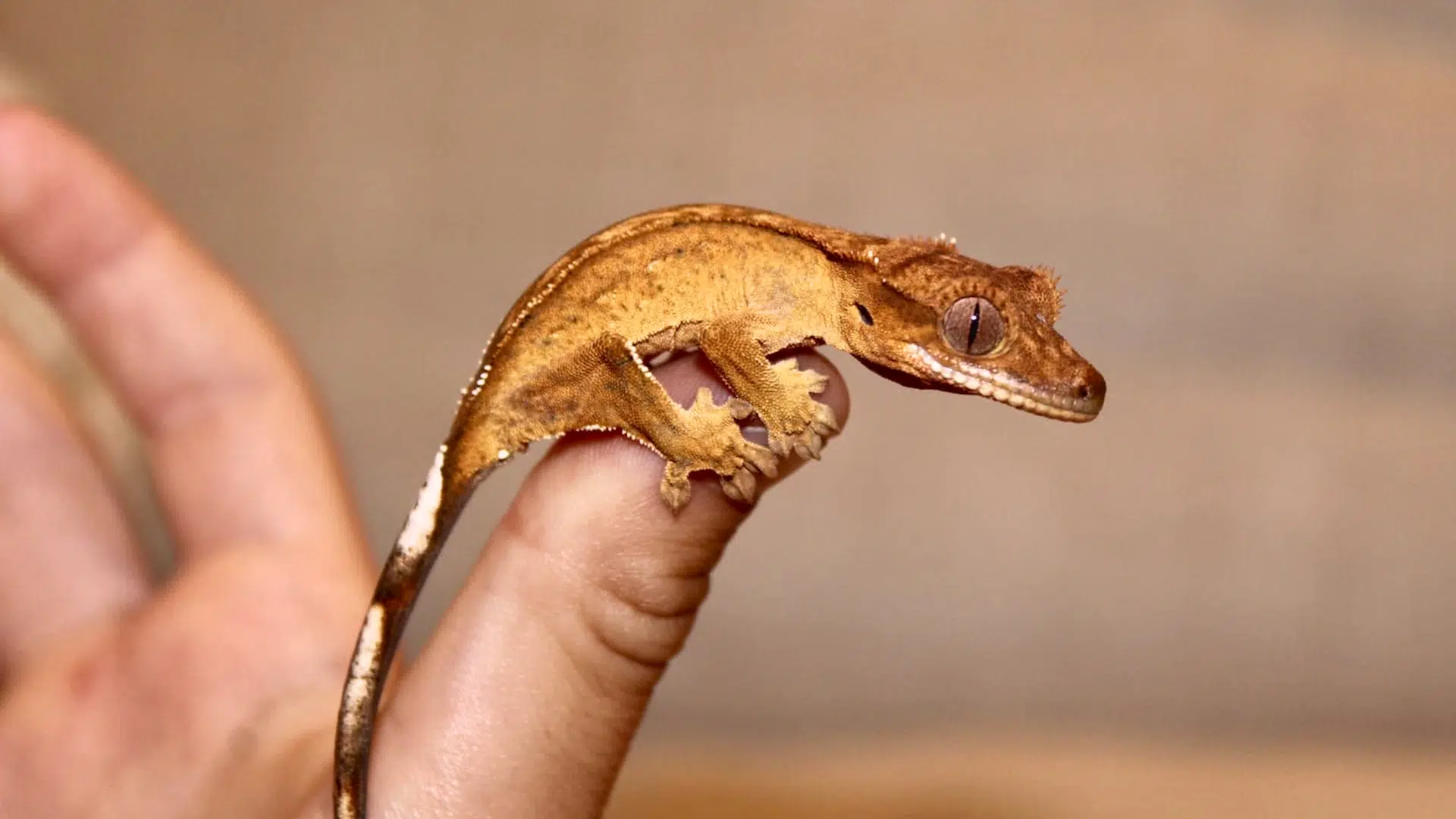
Geckos may look small and simple, but they have some surprising traits that make them truly unique. I’ve gathered a few fun facts that will make you see these little reptiles in a whole new way:
- Tail Trick: Geckos can drop their tails to escape danger and grow them back later.
- No Eyelids: They don’t blink; geckos lick their eyes to keep them clean and moist.
- Longevity: Some geckos can live up to 15–20 years in good care.
- Sticky Power: Their tiny foot hairs let them cling to smooth glass without slipping.
- Sound Talkers: Unlike most lizards, many geckos chirp or click to communicate.
- Color Shifters: Certain species can change shades depending on light, mood, or temperature.
- Night Vision: Geckos have excellent night vision, hundreds of times better than humans.
Conclusion
Geckos may be small, but they’re among the most fascinating reptiles on Earth. I’ve always admired how adaptable they are, living everywhere from dry deserts to tropical forests.
Their ability to climb walls, change colors, and communicate in their own way shows just how clever nature can be.
If you’re watching one cling to glass or hearing its tiny chirp, it’s hard not to be impressed. These little creatures have survived for millions of years by using their smart instincts and unique traits.
I hope this look into their world helps you appreciate geckos a bit more.
The next time you see one dart across a wall or rest under a light, you’ll know there’s more to that moment than just a quick glance.


